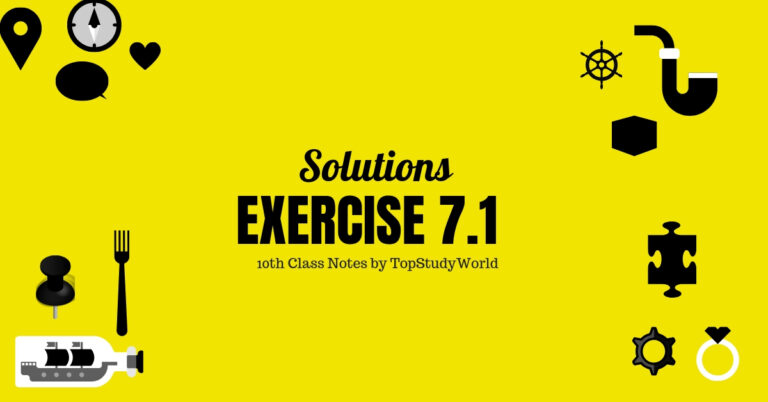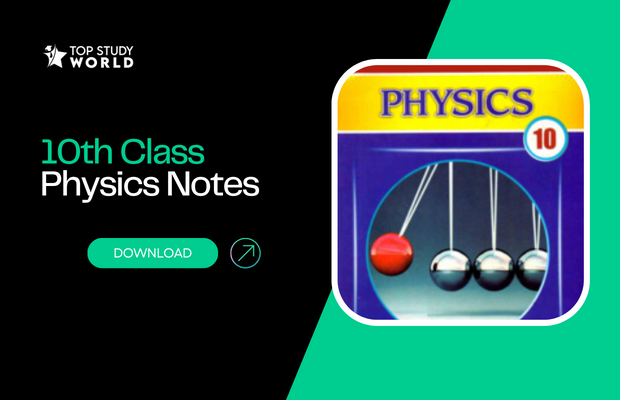
CHAPTER 9: CHEMICAL EQUILIBRIUM
The first chapter in class 10th chemistry textbook is titled Chemical Equilibrium. It is the state in which both reactants and products are present in concentrations that have no further tendency to change with time. The important topics of this chapter include:
Differentiate between irreversible reaction and reversible reaction.
Irreversible Reaction
The reaction which proceeds in one direction only is called irreversible reaction. The products formed once cannot be converted back to the reactants. Hence, the reaction is irreversible. For example, the decomposition of ammonium chloride (NH4Cl) into ammonia (NH3) and hydrogen chloride (HCl) is an irreversible reaction. It is not possible to convert the products, NH3 and HCl back to NH4Cl.
Reversible Reaction
The reaction which can go on in both directions, i.e., from reactants to products as well as from products to reactants is called reversible reaction. For example, in the Haber process for manufacturing ammonia, nitrogen and hydrogen react together under suitable conditions to form ammonia according to the equation N2 + 3H2 ⇄ 2NH3.
What is the equilibrium constant?
Equilibrium is a very powerful and useful concept in chemistry. It allows us to predict whether a process will proceed to completion, or whether it will reverse course and produce reactants instead of products.
The equilibrium constant is a mathematical representation of this concept that can be used to make quantitative predictions. Although the concept of equilibrium is often introduced in the context of chemical systems, it’s not limited to chemistry; equilibrium is a general property of any closed system.
The equilibrium constant is always expressed as the ratio of two concentration terms raised to powers that relate to their stoichiometric coefficients from the balanced chemical equation.
- What are irreversible reactions? Give a few characteristics of them.
- Define the Law of Mass Action
- Why at equilibrium state reaction does not stop?
The chapter becomes very grasping if you pay attention. Do you know?
A chemical reaction is a process whereby the chemical properties of a substance are changed by a rearrangement of the atoms in the substance. – Encyclopedia
PDF Chapter 9
Size: 3.9 MB | Pages: 21 | Content: Solved Exercise, MCQs, Short Questions
The simple definition of an acid is that it is a material that produces positive ions in solution whereas a base provides negative ions in solution. So what does this chapter have in store for us?
- A solution of hydrochloric acid is 0.02M. What is its pH value?
- Write a note on types of salt?
- What are the indicators, universal indicators, and pH meter?
- Explain Lewis Concept of Acids and Bases with examples.
- What do you know about Stomach acidity?
Do you know?
Milk has an acid called lactic acid.
PDF Chapter 10
Size: 6.9 MB | Pages: 38 | Content: Solved Exercise, MCQs, Short Questions
This chapter may test your wits to the final level but be patient. Organic chemistry is really lie a game and once you know the rules, you’re destined to win. This is a branch of chemistry that deals with carbon compounds (other than simple salts such as carbonates, oxides, and carbides). The important topics are:
- What are the functional groups? Give an example of Ketonic Group, Aldehydic Grup, And Carboxyl Group.
- Who rejected the vital force theory and how?
- What is the dot and cross formula?
- Define an aromatic compound. Give an example.
- What is the difference between n-propyl and isopropyl?
Carbon—with its four valence electrons—happens to be tetravalent, or capable of bonding to four other atoms at once. – Encyclopedia
PDF Chapter 11
Size: 5.3 MB | Pages: 31 | Content: Solved Exercise, MCQs, Short Questions
CHAPTER 12: HYDROCARBONS
It’s a relatively easier topic since you’ve already the more difficult one previously. Hydrocarbon is a class of compounds containing only hydrogen and carbon, as alkane, methane, etc. The important topics to look forward to in this chapter are:
- Write down two ways you can prepare Alkanes with?
- Write the preparation of Alkenes?
- Write the uses of ethene?
- Differentiate between saturated and unsaturated hydrocarbons?
- Why alkanes are used as fuel?
Do you know?
The hydrogen and carbon are bonded with non-polar covalent bonds. Because of its lack of polar covalent bonds, hydrocarbons cannot create hydrogen bonds with water and are hydrophobic. – Kidzsearch
PDF Chapter 12
Size: 4.1 MB | Pages: 23 | Content: Solved Exercise, MCQs, Short Questions
CHAPTER 13: BIOCHEMISTRY
A little piece of advice! Give extra attention to this chapter if you wish to select biology at intermediate level. It really is a crucial branch of study for medical studies ahead. Biochemistry is the study of chemical processes within and relating to living organisms. The important topics are:
- Give the classification of carbodhyes.
- Describe hydrolysis of sucrose
- What is protein? Write its composition
- What are amino acids with their general formula?
- Name the components of nucleotides in DNA
If you could type 60 words per minute, eight hours a day, it would take approximately 50 years to type the human genome. – Thoughtco
PDF Chapter 13
Size: 3.5 MB | Pages: 18 | Content: Solved Exercise, MCQs, Short Questions
CHAPTER 14: THE ATMOSPHERE
 It’s an interesting branch of chemistry since it always appears as a significant topic in global and regional politics. The atmosphere is the whole mass of air that surrounds the Earth in simple words. The important topics are:
It’s an interesting branch of chemistry since it always appears as a significant topic in global and regional politics. The atmosphere is the whole mass of air that surrounds the Earth in simple words. The important topics are:- Write a note of the Green House Effect?
- How Ozone layer is depleted? Explain
- What is the difference between primary and secondary pollution?
- How acid rain is produced?
- Justify ozone is beneficial to human beings.
Do you know?
99% of the atmosphere is made up of oxygen and nitrogen.
PDF Chapter 14
Size: 4.2 MB | Pages: 20 | Content: Solved Exercise, MCQs, Short Questions
CHAPTER 15: ENVIRONMENT CHEMISTRY II – WATER
 Environmental chemistry is the scientific study of the chemical and biochemical phenomena that occur in natural places. The important topics are:
Environmental chemistry is the scientific study of the chemical and biochemical phenomena that occur in natural places. The important topics are:
- How polarity of water molecular plays its role to dissolve the substance?
- Explain hydrogen bonding in the water molecule
- How Hardness in water is caused? Explain
- Why water is considered to be a universal solvent?
- How temporary hardness is removed by Clark’s method?
27,000 trees are cut down each day so we can have Toilet Paper. – TheWorldCounts
PDF Chapter 15
Size: 3.6 MB | Pages: 18 | Content: Solved Exercise, MCQs, Short Questions
CHAPTER 16: CHEMICAL INDUSTRIES
 The chemical industry comprises companies that produce industrial chemicals. The important topics are:
The chemical industry comprises companies that produce industrial chemicals. The important topics are:
- Explain the process of roasting
- What is Solvay’s process of manufacturing sodium carbonate
- Explain Haber’s process
- Give the advantages of Solvay’s process
- What are the differences between Diesel Oil and Fuel Oil
Do you know?
The Haber process uses a catalyst mostly made up of iron. – Kidzsearch
PDF Chapter 16
Size: 4.4 MB | Pages: 22 | Content: Solved Exercise, MCQs, Short Questions

He is an SEO wizard and founder of Top Study World & Nafran, has been featured more times than a celebrity on Ahrefs, Semrush, Dawn News, Propakistani and dozens more. His superpower? Helping students ace their exams!







